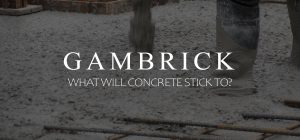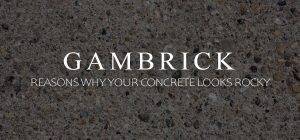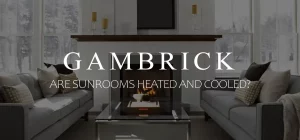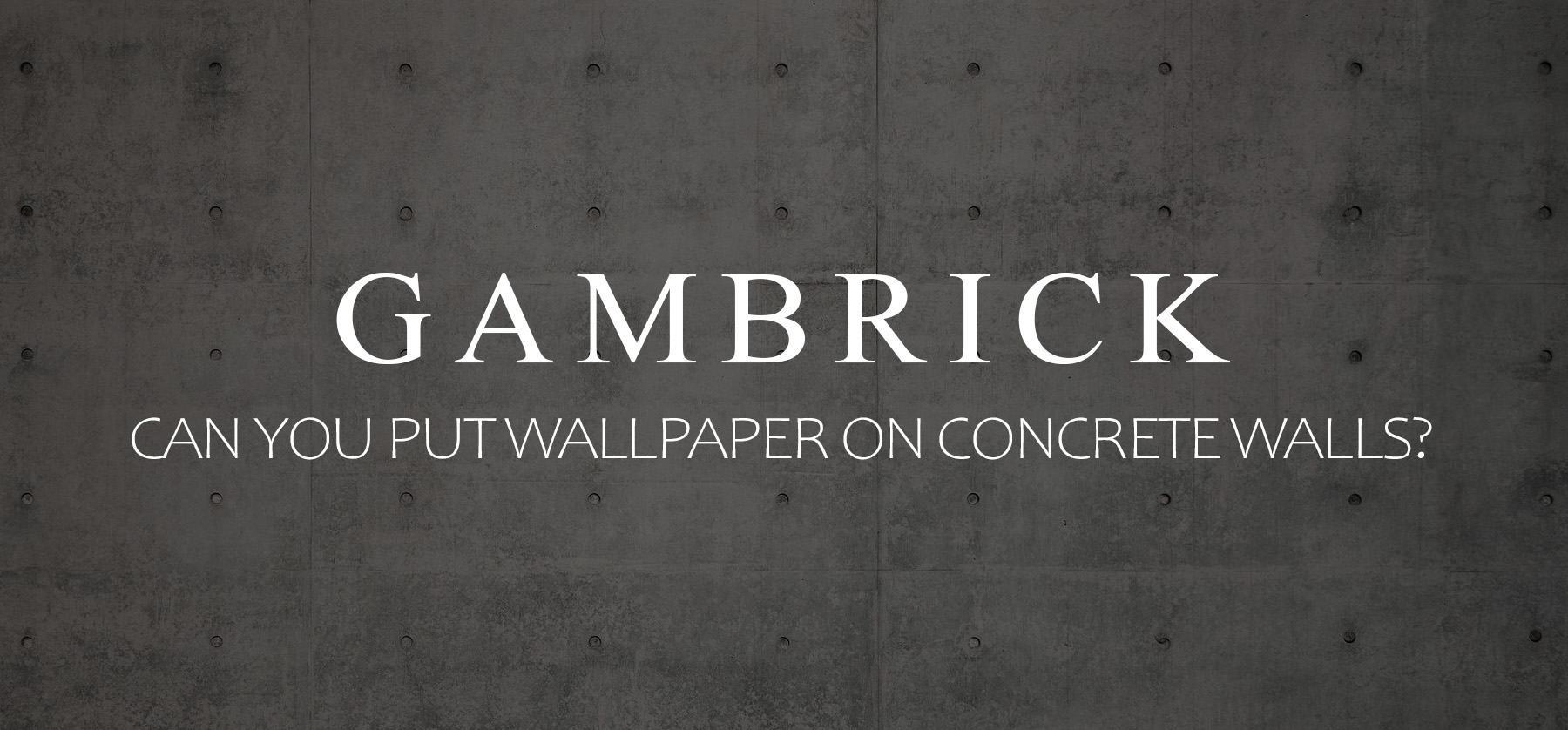
Can You Put Wallpaper On Concrete Walls?
You can put wallpaper on concrete walls, but there are some challenges you’ll have to deal with first. Concrete walls are rough, dense, porous and uneven, which makes doing things like hanging wallpaper or pictures more difficult. Because it’s such a porous material, moisture can absorb through the concrete and onto the back of your wallpaper. This eventually makes the glue soften which causes the paper to fall off. So in addition to hanging the wallpaper you also have to seal the wall against water penetration.
Concrete is coarse and gritty which can tear the wallpaper or give it a rough, uneven look. Proper preparation of the surface can reduce or even eliminate these kinds of problems. The key to hanging paper on concrete or cement walls is to smooth the surface by sanding it and making sure it stays dry.
Even if you remove all the protruding bits of cement from the wall it will still be gritty and porous. But you can still hang wallpaper to give your room some an added flair. Choosing wallpaper that’s appropriate for the surface and properly preparing the walls for the paper are both very important steps to a achieving a professional quality installation.
You can’t just use any paper on a rough surface. It’ll be more prone to rips during and after installation. Choose a paper that’s thick enough to resist lots of wear and tear. Good quality paper is generally more expensive but it’s worth it to avoid tears in the future. Some manufacturers even make paper specifically for masonry surfaces although the patterns are more limited.
Hanging wallpaper on cement walls is challenging, but it brings a style that painting concrete walls can’t math.
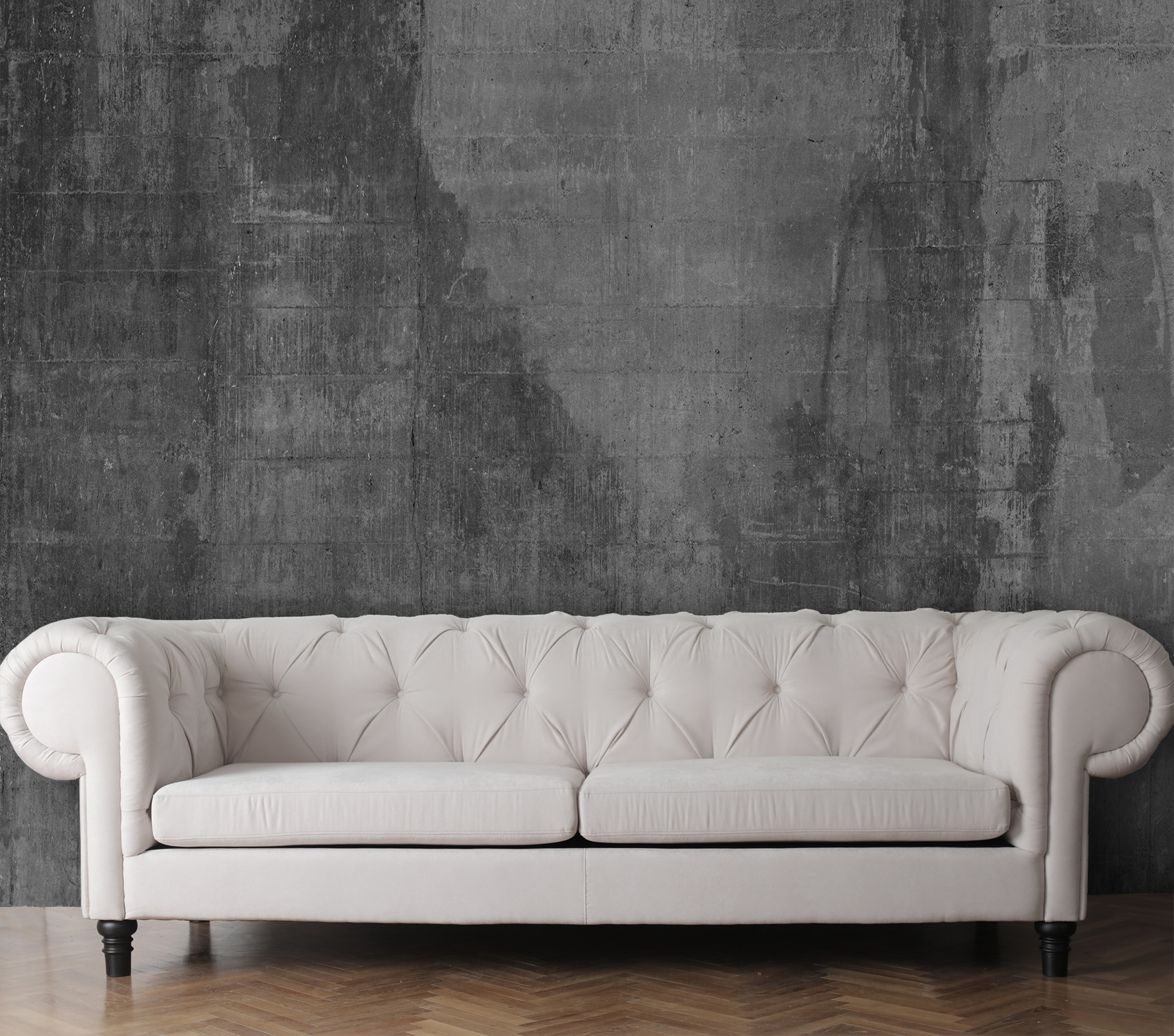
Step 1. Clean Protrusions
Chip off any excess cement or mortar protruding off the walls. Poured concrete and block walls are rarely smooth and generally have chunks of concrete, cement or mortar sticking out from the surface of the wall. These protruding chunks will cut right through the wallpaper and need to be removed so that the wall is flat.
Remove any jagged chunks,rocks or other protrusions using a masonry chisel, hammer or angle grinder.
Even if the protrusion isn’t sharp, you’ll still see its shape once the paper is installed.
Run a level or long straight piece of wood against the wall. If you hit a snag, remove it with your tool of choice.
A masonry chisel and hammer are great at banging off small bits but they’re not very accurate and can sometimes leave a gauge into the wall. If you want precision use an angle grinder with a diamond tipped masonry blade.
Step 2. Repair Holes
Most concrete walls are not perfectly smooth. They’re rough, sometimes jagged, and usually contain some pits and holes. This is especially true if you’ve used a hammer and chisel to remove protruding bits from the wall’s surface.
The best way to repair holes in a concrete wall is with fresh cement or concrete. Use concrete for large holes and cement for small ones. Both can be purchased in ready mixed bags.
Pour cement the cement or concrete mix into a plastic mixing tub or wheel barrow and add water slowly. Mix the material with a trowel, how or shovel until it becomes a paste with a consistency like peanut butter or thick oatmeal.
Next, apply the cement patch to holes in the wall using a masons trowel. Smooth the surface of the patched hole with the wall as best as possible. Once the patch starts to dry, use a rough damp sponge to wipe it smooth.
Allow the cement patch to dry completely. Drying time will depend on the size of the patch and the temperature and humidity in the room.
Step 3. Clean The Walls
Before you can hang wallpaper on a concrete wall it needs to be thoroughly cleaned. Wallpaper glue won’t adhere to the concrete if it’s dirty.
First, sweep the walls with a broom to remove loose dust.
Next, scrub the concrete with a solution of household detergent and ammonia using a medium to stiff bristle brush. The solution I use is a drop or two of detergent and a cup of ammonia to a full bucket of water. A simple cleaning solution like this is string enough to remove regular dirt and grime.
If your concrete has grease or oil on it, use a store bought masonry cleanser that fights grease.
If your wall has mold, use a solution of vinegar and water. Soak the wall with vinegar water using a bristle brush or rough sponge. Make sure to get the solution as deep into the concrete’s pores as possible in order to kill all the mold spores.
If the mold is really bad you can also try a store bought mold cleanser. But commercial cleansers are usually a lot strong than home made cleansers and contain chemicals so I always start with something more natural and mild first.
Scrub hard enough to get cleaning solution deep into the concrete’s pores.
Completely dry the wall before proceeding.
Step 5. Prime The Concrete Walls
Apply interior latex to the concrete walls with a paintbrush and thick nap roller. Concrete is textured and gritty so you need a roller and brush that’s tough enough to handle a rough surface. And this is just a primer coat that will eventually be covered with wallpaper so use a cheap throw away brush instead of an expensive finishing brush by Purdy. The concrete’s grit can destroy a good quality brush in a single job.
If this is the first time you’re painting or priming the concrete walls, use a few coats. Primer will soak into the concrete’s pores much more than when you’re painting drywall or wood.
Allow the primer to dry completely.
Once dry, primer will change color. Once it does you can inspect the walls for areas that may need another coat. If you find any, apply another coat and allow it to thoroughly dry. Then inspect again. repeat the process until the wall have complete coverage.
Make sure to use a primer that’s designed for masonry. Paint that’s designed for wood or drywall may peel when applied to concrete. This would also cause the wallpaper to peel off.
Step 6. Measure The Wall
Measure the wall with a measuring tape to determine the height and total length of wallpaper you’ll need. Then lay out your wallpaper and figure out if you’ll need seams and where they’ll be.
Step 7. Cut Wallpaper
Once you’ve measured your walls, determined how many feet or paper you need and decided where your seams will go, it’s time to cut some paper.
Cut each sheet of wallpaper a few inches longer than what’s needed using a utility knife. I like to cut all my lengths before I start installing. But some people prefer to cut sheets as they go. Either way works fine. If you’re inexperienced with wallpaper then I’d recommend cutting as you go.
Step 8. Apply Paste
Apply wallpaper paste to the back of the wallpaper with a sponge brush. If you’re using vinyl wallpaper, use heavy-duty vinyl adhesive instead of wallpaper paste.
Lay each strip out flat on a long work table and apply an even coat of paste using a 3/8-inch-nap paint roller. You can also lay the wallpaper on the ground to apply adhesive but be careful not to damage the paper.
I don’t recommend hanging wallpaper with an adhesive back on a concrete wall. The adhesive is generally very thin which works well for a flat surface like drywall but not for a porous wall like concrete. I like to apply the adhesive myself so I can be sure there’s enough glue to hold the paper in place without getting bubbles.
Allow the paste to sit until it becomes tacky to the touch.
Don’t apply paste to the concrete wall. Only apply it to the back of the wallpaper.
Apply a generous amount of paste because concrete is rough and porous. Some of the paste will absorb into the contours and pores of the wall. In general, the rougher the surface the more paste you can use.
If you’re used to wallpapering drywall you may be surprised how much paste a wall can absorb. If you use too little paste the paper can peel off or bubble. Don’t worry about using too much because you’ll smooth it out later using a sponge.
Step 8. Hang The Wallpaper
Position the wallpaper on the wall and Gently press it into place. Use a sponge to press the paper into the wall and smooth out the paste. Don’t press too hard or you’ll risk tearing the paper.
Don’t use a roller or squeegee to smooth the wallpaper. You could press the wallpaper into the wall’s imperfections which makes them more visible.
By using heavy paste and a sponge it’s possible to hide small imperfections in the concrete.
The thinner the paper the more gentle you need to be.
Step 9. Cut Off Excess Paper
Cut excess paper with a utility knife and a straight edge.
Use a long level or a straight piece of wood. Bring a lot of blades for your utility knife. Cutting wallpaper on a concrete wall will quickly dull the blades. I generally change the blade every sheet to get the cleanest edge.
Step 10. Repeat
After your first sheet of wallpaper is hung, repeat the steps until you’ve finished wallpapering the entire room.
Try to leave seams in the corners or places that are inconspicuous and not anywhere near a focal point of the room.

How To Hang Wallpaper On Cement Walls
In addition to hanging wallpaper directly on concrete walls, which we outlined in the section above. There’s an alternate method using heavy duty wall liners which we’ll discuss next.
Install A Heavy Duty Wall Liner
After the walls are cleaned of all protrusions, patched, thoroughly cleaned and dried, a heavy duty wall liner can be installed directly on top of the concrete.
Concrete has a gritty, rough texture that can tear wallpaper. A thick liner will protect the paper because it sits between the wallpaper and concrete. Don’t press too hard when hanging the liner because you may push the liner into the wall texture. You can use a brush or roller for the wallpaper, but use a vinyl smoother for the liner.
- Cut the liner in lengths according to the dimensions of your wall.
- Apply a strong adhesive glue to the back of the liner.
- Position your strips against the wall.
- Use a plastic vinyl smoother to push the liner gently into place.
- Allow the liner about 24 hours to dry before you proceed.
Once the liner dries you can install wallpaper on top.
Liners are great because they cover up the contours of the concrete. This makes the finished wallpapered wall much smoother and less likely to rip.
Choose The Right Wallpaper
Choosing the right wallpaper is very important when covering a concrete wall. Even though the liner will help protect your wallpaper from tearing, some of the concrete’s texture and unevenness may still show through.
- Avoid bright and solid colors because imperfections in the wall will cast shadows which makes them stand out.
- Patterned designs, vinyl and overprints are ideal for cement walls.
Busy patterns are best if your concrete is very uneven. Any shadows cast will blend in with the wallpaper’s design.
Hang Wallpaper Carefully
Measure the walls and cut your wallpaper lengths to size. I usually cut a few inches long than I need and then trim the paper on the wall. The wallpaper will be installed directly on top of the wall liner.
- Apply wallpaper adhesive glue to the back of the wallpaper if the paper is not pre-pasted.
- Carefully place your paper against the wall, starting at the top and working your way down.
- Allow the paper to overlap with the ceiling and floor by about 1 inch, you can cut the excess later.
- Use your smoother to eliminate any creases.
- Try to leave no overlap between your strips.
- Cut the overlapping paper from the ceiling and floor using a utility knife.
- Try to leave seams in the corners.
- If you’re using a patterned wallpaper make sure the pattern is kept across seams.
Continue to hang wallpaper until the entire room is covered.
Things You’ll Need To Hang Wallpaper
Hanging wallpaper on concrete walls is a DIY project you can complete in a day or so depending on how much cleaning and prep the walls need. Most of the things you’ll need can be purchased at a home improvement or crafts store like Home Depot or Michael’s.
- Bucket
- Ammonia
- White Vinegar
- Household Detergent
- Bristle Brush
- Wall Liner
- Adhesive Glue
- Plastic Vinyl Smoother Or Roller
- Utility Knife & Blades
- 3/8 Inch Nap Paint Roller & Pan
- Cheap Paint Brush
- Masonry Primer
- Masonry Chisel & Hammer
- Angle Grinder & Blade
- Broom
- Level Or Other Straight Edge
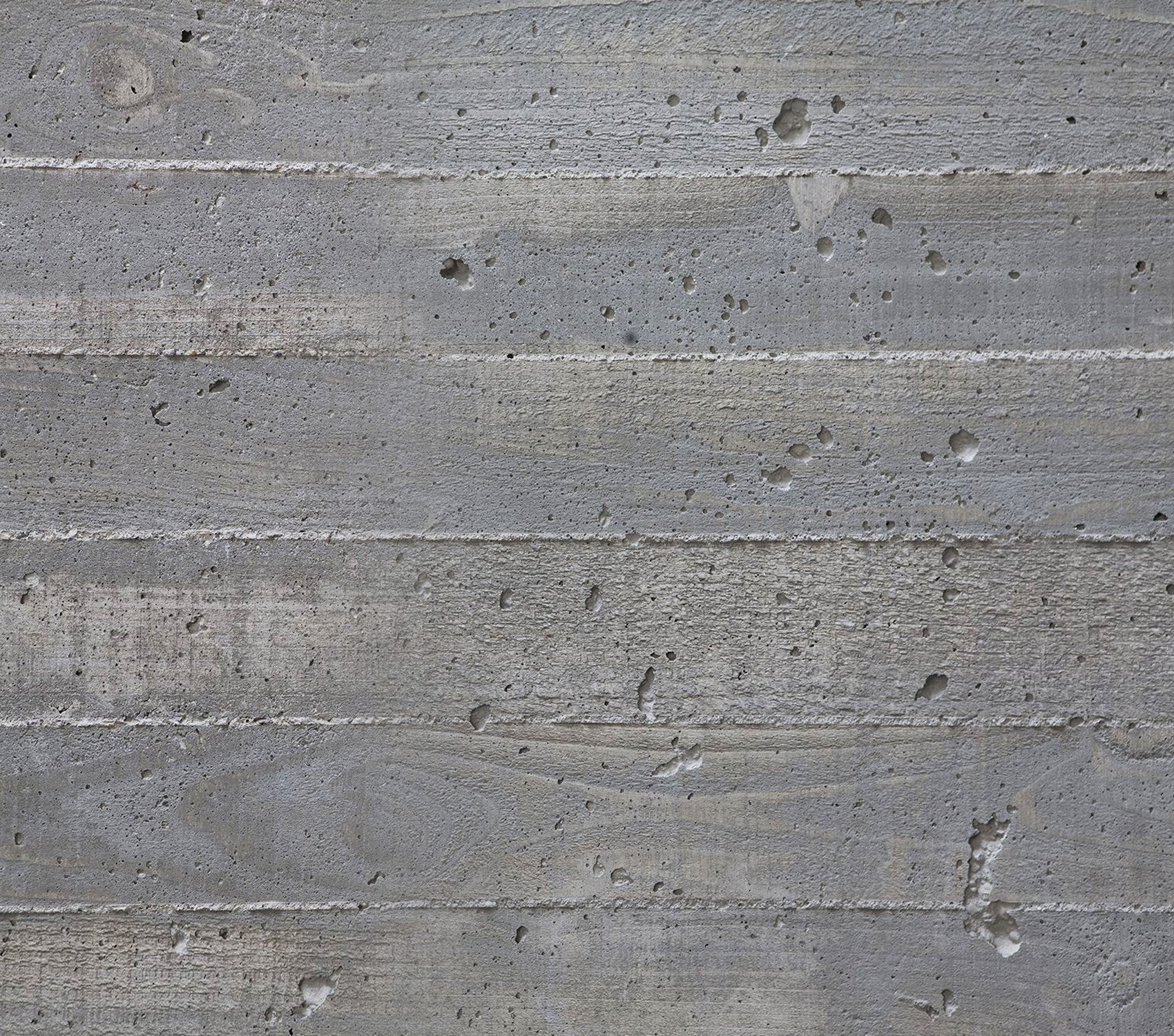
FAQ
In this section I’ll answer all the most frequently asked questions we get about wallpapering concrete walls.
Is Easier To Paint A Concrete Wall Rather Than Wallpapering It?
Although both wallpaper and paint can brighten up a dull concrete wall, wallpaper has some advantages. It can camouflage imperfect or damaged concrete walls, soften rough or severely textured areas and even out awkward angles.
Wallpaper also comes in combinations of colors, patterns, and textures that would be nearly impossible to duplicate with paint. This is a big help when covering concrete because the walls are rarely flat and smooth. When you paint an uneven wall with a solid color every imperfection stands out because they cast shadows, but patterned wallpaper covers those flaws up by hiding the shadows within the pattern.
Are Some Concrete Walls Easier To Wallpaper Than Others?
Yes. Concrete can vary greatly in terms of texture, porosity, condition, age and grit. Some walls may be very smooth while others are jagged and gritty with exposed stones. And some may have lots of protruding areas caused from forms. Every concrete wall is different so you really have to spend time before you start wallpapering just inspecting the wall and making repairs. Grind or chisel off all the protruding bits of concrete and then make patches where needed. Get the wall as flat and even as possible before you hang any paper or a liner.
If this is your first time wallpapering on concrete, I recommend using a liner. It makes the job much easier because the liner protects the paper and gives you more wallpaper options like prepasted or peel-and-stick.
Plan out your strips before you start cutting and hanging. Decide on where the seams will go and cut strips of paper based on the repeating pattern if you have a patterned wallpaper.
Kitchens or bathrooms are smaller and tend to have more things to paper around. This makes them more difficult because of all the cuts.
A bedroom or hallway is a good choice for a beginner.
Can I Wallpaper Over Any Masonry Wall?
Yes, wallpaper will adhere to drywall, new and old plaster,concrete, cement, stone and brick. Special wallpaper for concrete and masonry walls are thicker and more durable than what you’d use on drywall or paneling. But the colors and patterns are more limited. To fix this issue, use a thick lining paper first. The liner hangs on the masonry and sits between the concrete and wallpaper. This gives you a lot more options.
You can even wallpaper over tile and nonporous surfaces like laminate paneling.
To hang wallpaper on most masonry walls like concrete, cement, brick and cinder block, you should first apply lining paper, which is a blank wall covering that provides a smooth surface for regular wallpaper.
No matter what kind of masonry wall you have, the key to success is proper preparation of the walls. If there are protrusions you have to fix them first or they’ll tear through the paper. You also have to repair patches and thoroughly clean the walls or the paper won’t stick properly and you’ll get peeling paper or bubbles.
How Do I Prepare Concrete Walls For Wallpaper?
First, grind or chisel out any protruding bits of concrete from the wall. Then patch holes or damaged areas with fresh cement, mortar or concrete. Run your hands along the wall. Any bumps you feel will show through the paper, so try and sand them down with the grinder.
The wall surface should be thoroughly cleaned, dry, and free of mildew, grease, stains, and loose paint. If the wall is dirty the adhesive won’t stick and you’ll get peeling paper or bubbles.
If the wall is very uneven or has exposed stones showing through the concrete, consider using a lining paper.
Apply a primer to the concrete before you install either the wallpaper or liner. A primer protects and seals the concrete and helps the wallpaper bond to the surface. It also makes it easier to shift the paper into position. Removal of the paper is also easier if you’ve used a primer.
Once the wall is primed and dry, you can start installing your liner or wallpaper.
Is Wallpaper More Expensive Than Paint?
Yes. A Single roll of wallpaper, which covers about 30 square feet, typically costs around $35. For the same amount, you could buy a gallon of premium-quality paint which would cover approximately 400 square feet. In addition you need to clean the concrete, patch it and but supplies like adhesive. To wallpaper some concrete walls you also need to install a thick liner or primer. It’s definitely more expensive than paint.
However, wallpaper can be removed in the future without damaging the concrete, paint can’t. It is very hard and expensive to remove paint from a concrete wall and sometimes can’t even be done.
Consider wallpapering just a single accent wall instead of all the concrete to keep costs low.
What Type Of Wallpaper Should I Use On Concrete?
The most popular choices for wallpapering a concrete wall are vinyl and vinyl-coated wallpapers. They’re usually the least expensive, the most durable, and the easiest to apply and remove.
Avoid other types of coatings like foil, grass cloth, flocked, and embossed because they’re more expensive and harder to hang on cement.
In a high-traffic areas, consider how easy the paper is to clean. Washable papers can be occasionally wiped with a damp sponge but a scrubbable paper can handle more frequent cleanings. Check the label and instructions for your paper before you but.
If you’re hanging a thick liner on the concrete wall before the wallpaper then you’ll have more options. The paper can be a little thinner since the liner helps protect it. It’s also easier to hang wallpaper on a liner than directly on concrete.
Some manufacturers make wallpaper specifically for masonry walls like cement and concrete. But colors and patterns are more limited. I prefer using regular paper because there’s such a wide variety of choices.
Should I Use Prepasted Or Unpasted Wallpaper For Concrete Walls?
Prepasted paper has paste already applied to its back. To activate the paste, soak the paper in water. This is a great choice for flat and smooth walls like drywall but not gritty concrete or cement. I wouldn’t recommend using a prepasted wallpaper unless you hang a thick liner first.
With unpasted wallpaper, you apply the adhesive yourself.This is the better option for hanging wallpaper directly on a concrete or cement wall because you can use more adhesive. Concrete is porous and textured so you need more paste to avoid bubbles.
Peel-and-stick wallpaper is another option that works if you’ve installed a liner first, but not directly against concrete.
How Do I Know How Much Wallpaper To Buy?
To calculate how much wallpaper you need to cover all your concrete walls, you’ll need a tape measure. Measure the length of all your walls and the height. Then multiply the height times the length to get the square footage of your walls. Do not deduct for windows, doors and other openings but do deduct for base and crown moldings.
Round up your measurements. This will allow some leeway for pattern matching and trimming.
Divide the room’s square footage by the coverage of a single roll. Normally a roll of wallpaper covers 27-30 square feet, but check the amount for the paper you select. This will tell you how many rolls you need to buy. Round up to the nearest roll.
I also like to make a plan for each length of wallpaper and plan out all my lengths and seams. Sometimes simple square footage calculations can be deceiving because it leaves seams in weird places.
Pay attention to the repeat distance when using a patterned wallpaper because you need the pattern to match all around the room.
I typically buy at least one roll extra just in case of mistakes. It’s also good to have an extra roll in storage in case I need to make repairs later.
What Is A Wallpaper Repeat?
A repeat is the distance from the center of one pattern to the center of the next. It could be an inch, a foot, or much more. The distance of the repeat affects how much wallpaper you’ll need to buy so you can match patterns throughout a room.
A large repeat of 6 inches or more may require more paper than a 1 inch repeat.
Where Do I Start Wallpapering A Cement Wall?
Where the best place to start is depends a lot on where you’ll end up at the end. As you wallpaper a room, you’ll eventually reach a place where the pattern won’t line up. This is called the mismatch. You want to hide the mismatch as best you can in an area that’s not as visible like in a dark corner.
Once you know where the mismatch will go, work back and find your starting point.
This takes some planning. Before I start papering I go around the room with a pencil and mark all my seams. I plan every strip of paper out before I make any cuts and even before I buy my paper.
If you don’t properly plan a wallpaper job you could end up with a mismatch in a visible area. This is a huge mistake that’s ruins plenty of wallpaper projects.
After the mismatch is determined and you’ve plotted out all the seams, I like to start in a corner if possible. If not I start on the largest strip with the least amount of cuts. I find it easier to wallpaper a room once I have a large strip or two on the wall.
Where Should I hang The First Piece?
Hang your first strip of wallpaper along the plumb line. Let it to overlap slightly onto the ceiling and baseboard. You can cut the excess later with a utility knife.
With a smoothing brush, roller or plastic smoother, remove any air bubbles and check that the wallpaper adheres to the concrete wall or liner. Do not use excessive pressure or you’ll risk tearing the paper or exposing the concrete’s texture below. When hanging wallpaper on concrete walls you need to be more gentle than when working on drywall.
Use a broad knife to crease edges and a razor knife to cut excess paper from the top and bottom edges.
Wipe off excess paste with a damp sponge.
Be careful not to squeeze too much adhesive out of the sides because it could cause the edges to curl.Wallpapering on concrete requires a little more adhesive than usual so be gentle when you push it into place. Paste will work its way into the concrete’s texture and pores without too much force.
How Do I Hang Straight Wallpaper?
It’s very important to hang wallpaper on a concrete wall perfectly straight because it’s harder to adjust that when you’re working on a smooth surface. Shifting the paper can tear it because the concrete surface is rough and gritty. This is true even if you use a liner.
Draw a plumb line, a straight vertical line at your starting point. A plumb line is essential to hanging wallpaper so use a level to draw it.
Align your first strip perfectly with the line.
Make sure the edge of the wallpaper is also straight by starting with the factory edge. If you use an edge that’s not straight against the plumb line your wallpaper will be off.
How Tight Should Seams Be?
Edge seams should be tightly butted, not overlapped or puckered. Make sure to match the pattern from one piece to the next. Set seams with a seam roller using light pressure.
How Do I Wallpaper Around Concrete Doorways & Windows
Wallpapering around concrete doorways and windows is harder if there’s no trim to hide the edge of the wallpaper. You have to carefully follow the contours of the frame so that the paper comes right to the edge.
Before applying adhesive, cut a rough opening for the door or window, leaving an extra 3 inches of paper on all sides. Apply adhesive and then hang the paper. Make diagonal cuts near the corners of the rough opening. Smooth around the opening and trim. If there’s no trim the cut you make will be visible so be careful. Follow the edge of the door or window frame carefully.
When wallpapering outlets, turn off the electricity and remove the plate covers. Hang your paper over the outlet and cut an X into the outlet. Smooth the paper into place and trim the flaps.Then install the plate covers gently. Don’t over tighten the plate covers or you’ll squeeze out adhesive.
Summary: Can You Put Wallpaper On Concrete Walls?
You can put wallpaper on concrete walls, but there are some challenges you’ll have to deal with first. Concrete walls are rough, porous and uneven which makes hanging wallpaper more difficult. Because it’s such a porous material, moisture can absorb through the concrete and onto the back of your wallpaper. This eventually makes the glue soften which causes the paper to fall off. So in addition to hanging the wallpaper you also have to seal the wall against water penetration. Concrete is coarse and gritty which can tear the wallpaper or give it a rough, uneven look. But proper preparation of the surface can reduce or even eliminate these kinds of problems. The key to hanging paper on concrete or cement walls is to smooth the surface and make sure it stays dry.
Even if you remove all the protruding bits of cement from the wall it will still be gritty and porous. But you can still hang wallpaper to give your room some an added flair. Choosing wallpaper that’s appropriate for the surface and properly preparing the walls for the paper are both very important steps to a achieving a professional quality installation.
You can’t just use any paper on a rough surface. It’ll be more prone to rips during and after installation. Choose a paper that’s thick enough to resist lots of wear and tear. Good quality paper is generally more expensive but it’s worth it to avoid tears in the future. Some manufacturers even make paper specifically for masonry surfaces although the patterns are more limited.
Hanging wallpaper on cement walls is more challenging, but it can definitely be done and really brings some color and style to an otherwise boring grey wall.
If you have any questions or comments about hanging wallpaper on concrete walls email any time.

John Mazzuca | About | More Posts |
Custom Home Builder
John Mazzuca is a custom home designer and builder at Gambrick with over 25 years experience in the construction industry. John has designed, built and/or remodeled hundreds of homes, small buildings, and commercial projects. He writes about business, real estate, home building, and household electronics. His work has been featured in Fox Business, Better Homes & Garden, House Beautiful, and more.

